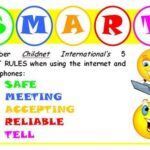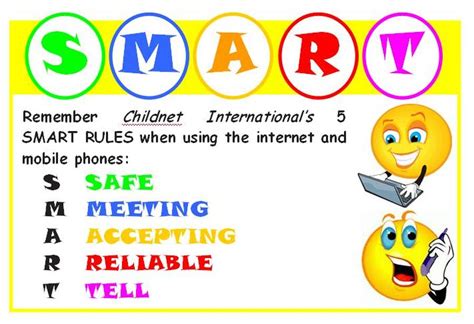
Gen Z is increasingly baffled by slang terms popularized by Gen X and Millennials, leading to humorous generational divides online as older adults share phrases that leave younger generations scratching their heads.
The linguistic landscape is constantly evolving, and what was once considered cutting-edge slang can quickly become outdated and incomprehensible to younger generations. A recent online trend has highlighted this phenomenon, with Gen X and Millennials sharing phrases and expressions that leave Gen Z utterly perplexed. This generational gap in language use has sparked amusement and reflection on how communication styles shift over time. The Yahoo Lifestyle article, “’As If!’ Gen X & Millennial Slang That’ll Confuse Gen Z,” delves into this growing disconnect.
The Generational Slang Divide
The crux of the issue lies in the rapid pace of cultural and technological change. Gen Z, having grown up in a digital world saturated with social media and internet culture, has developed its own unique vocabulary and communication style. Phrases that were commonplace during the 80s, 90s, and early 2000s, like “As if!,” “Talk to the hand,” or “Wig,” might as well be ancient Greek to many Gen Z individuals.
Older generations are finding humor in sharing these phrases, often accompanied by explanations or contexts that highlight the cultural significance of the terms. The resulting interactions reveal the fascinating ways language reflects and shapes cultural identity and generational experiences. “It’s funny how quickly language evolves,” one participant noted. “What was once trendy is now a source of confusion.”
Examples of Confusing Slang
The Yahoo Lifestyle article and the broader online conversation have highlighted numerous examples of slang that elicits befuddlement from Gen Z. Some of the most frequently cited include:
-
“As if!”: Popularized by the movie Clueless, this phrase is used to express disbelief or sarcasm. Gen Z might interpret it literally or simply not understand its dismissive connotation.
-
“Talk to the hand”: A dismissive gesture and phrase indicating that the speaker doesn’t want to hear what the other person is saying. Its use has largely faded, leaving Gen Z unaware of its original meaning.
-
“Wig”: Meaning something is so good it makes your wig fly off. While some in Gen Z use it now, its initial usage is attributed to older generations, particularly within the Black community, where the expression first originated as a commentary on gospel singers hitting high notes so impressive it metaphorically removes one’s wig.
-
“My bad”: While this phrase is still somewhat in use, the tone and context differ. For Gen X and Millennials, it was a straightforward admission of fault. For Gen Z, it might be replaced with a more nuanced expression or a simple “Oops.”
-
“That’s what she said”: Often used as a humorous, suggestive punchline, this phrase relies on double entendre. Its humor may be lost on Gen Z, who might find it outdated or even inappropriate.
-
“All that and a bag of chips”: Meaning someone is awesome or more than expected. The phrase is generally not something Gen Z would use.
-
“Boo yaa”: An expression of excitement or agreement. This slang is rarely, if ever, used by the younger generation.
-
“Da bomb”: Used to describe something as excellent or amazing. Gen Z would likely use a word like “fire” or “slaps” instead.
-
“Keep it real”: Meaning to stay true to yourself and authentic. This phrase is seldom used now.
-
“Take a chill pill”: A request for someone to calm down. This would sound quite outdated coming from a member of Gen Z.
The Role of Social Media and Internet Culture
Social media plays a crucial role in accelerating the evolution of language. Platforms like TikTok, Instagram, and Twitter facilitate the rapid dissemination of new slang and trends, leading to a constantly shifting linguistic landscape. Gen Z, being digital natives, is at the forefront of these trends, adopting and adapting language at an unprecedented pace. “The internet has compressed time,” explained one linguistics professor. “Slang that might have taken years to spread in the past now becomes ubiquitous in a matter of weeks.”
This rapid turnover makes it challenging for older generations to keep up, leading to the perception that Gen Z’s language is constantly changing and often incomprehensible. The use of acronyms like “IYKYK” (if you know, you know), “SMH” (shaking my head), and “Sus” (suspicious) further contributes to the linguistic divide, creating a sense of exclusivity and insider knowledge.
The Impact on Communication
The generational slang gap can have implications for communication in various contexts. In the workplace, for example, misunderstandings can arise when colleagues from different generations use different slang terms. This can lead to misinterpretations, frustration, and even feelings of exclusion.
Similarly, in social settings, the inability to understand each other’s language can create barriers to connection and empathy. While humor and amusement often accompany these misunderstandings, it’s important to recognize the potential for miscommunication and to bridge the gap through explanation and understanding.
The Evolution of Language: A Continuous Process
It is essential to remember that the evolution of language is a continuous process. Slang terms come and go, reflecting changing cultural trends and societal values. What is considered “cool” or “trendy” today might be outdated tomorrow.
This phenomenon is not unique to the current generational divide. Every generation has its own unique slang and expressions that distinguish it from previous and subsequent generations. The key is to approach these differences with curiosity and a willingness to learn, rather than judgment or dismissal.
Bridging the Gap
Several strategies can help bridge the generational slang gap and promote more effective communication:
-
Active Listening: Pay attention to the language used by different generations and ask for clarification when necessary.
-
Contextual Awareness: Consider the context in which slang is used. The same term can have different meanings depending on the situation and the speaker.
-
Open Communication: Encourage open and honest communication between generations, fostering a culture of mutual respect and understanding.
-
Humor and Playfulness: Embrace the humor inherent in generational slang differences. Laughing together can create a sense of connection and reduce tension.
-
Learning Resources: Utilize online resources like Urban Dictionary and slang dictionaries to stay up-to-date on current trends.
The Significance of Shared Language
While generational slang differences can create barriers to communication, shared language can also foster a sense of belonging and identity. Slang terms often serve as inside jokes or cultural markers that unite members of a particular group.
By understanding and appreciating the language of different generations, we can gain a deeper understanding of their values, experiences, and perspectives. This can lead to greater empathy, connection, and ultimately, a more inclusive and harmonious society.
The Broader Implications
The generational slang divide is a microcosm of broader cultural and societal shifts. It reflects the impact of technology, globalization, and changing social norms on the way we communicate and interact with each other.
By studying these linguistic differences, we can gain valuable insights into the forces that shape our society and the challenges and opportunities that lie ahead. It is a reminder that language is not static but rather a dynamic and ever-evolving reflection of the human experience.
Conclusion
The generational slang divide is a complex and multifaceted phenomenon with implications for communication, culture, and society. While it can create moments of confusion and amusement, it also presents an opportunity for learning, understanding, and connection. By embracing curiosity, fostering open communication, and celebrating the diversity of language, we can bridge the gap between generations and create a more inclusive and harmonious world. The seemingly simple topic of slang reveals a profound truth: language is more than just a tool for communication; it is a reflection of who we are and the world we inhabit. The Yahoo Lifestyle piece merely scratches the surface of a rich and ongoing cultural conversation.
Expanding on the Examples of Confusing Slang
Let’s delve deeper into why specific slang terms cause confusion for Gen Z and examine the nuances of their usage by Gen X and Millennials:
-
“As if!” (Detailed Breakdown): This phrase, immortalized by Alicia Silverstone’s character Cher Horowitz in the 1995 film Clueless, is the quintessential example of Gen X sarcasm. It’s used to express disbelief, disagreement, or a strong negative sentiment. The tone is critical. The actual words “as if” are not meant literally. For example, “You think I’m going to lend you money? As if!” translates to “There is absolutely no way I’m going to lend you money.” Gen Z’s confusion stems from a few factors: 1) The movie Clueless is not as culturally relevant to them, so they miss the reference. 2) The sarcastic tone can be misinterpreted in text-based communication, which is Gen Z’s primary mode of interaction. 3) Gen Z tends to use more direct language and may find “as if!” to be indirect and passive-aggressive.
-
“Talk to the hand” (Detailed Breakdown): This phrase, accompanied by the physical gesture of raising one’s hand palm-out towards the person speaking, is a clear sign of dismissal. It means “I don’t want to hear what you have to say.” Its peak popularity was in the late 1990s and early 2000s. Several reasons contribute to its obsolescence. The gesture itself can be seen as rude or aggressive, which clashes with Gen Z’s emphasis on inclusivity and respect. The phrase feels outdated and corny. The rise of internet slang offers more concise ways to express the same sentiment, such as “blocked” or “ignored.”
-
“Wig” (Detailed Breakdown): The resurgence of “Wig” is interesting because it highlights the cyclical nature of slang and the influence of Black culture. Its original use within the Black community, specifically related to the intensity of gospel performances, demonstrates how slang evolves from specific subcultures into broader usage. While some Gen Z users have adopted it, often shortened to “wig!” or “wig snatched!”, its roots are often unknown, leading to potential cultural appropriation concerns. Moreover, the meaning can be fluid. Sometimes it means something is so good it blew your mind; other times it simply expresses strong approval. The lack of a fixed definition and its cultural origins make it confusing for those outside of its initial context.
-
“My bad” (Detailed Breakdown): While still used occasionally, the nuance of “my bad” has shifted. For Gen X and Millennials, it was a relatively sincere apology for a minor mistake. For Gen Z, it can sometimes be used sarcastically or ironically, almost as a way to deflect responsibility. This tonal shift is significant. Gen Z often favors more self-deprecating humor and may use “my bad” to downplay a situation rather than fully acknowledging fault.
-
“That’s what she said” (Detailed Breakdown): This phrase relies heavily on double entendre and sexual innuendo. Its humor derives from taking an innocuous statement and twisting it into a suggestive context. While it was a staple of shows like The Office, its appropriateness has come under scrutiny. Gen Z is generally more aware of issues surrounding consent and sexual harassment, leading them to view “that’s what she said” as potentially offensive or at least cringeworthy.
-
“All that and a bag of chips” (Detailed Breakdown): Meaning someone or something is awesome, plus more. It implies a level of exceptionalism beyond the norm. The origins are a bit murky, but it likely arose from the idea of extra value – getting something extra “like a bag of chips.” The reason it is confusing is simply its age. It sounds dated and clunky to modern ears.
-
“Boo yaa” (Detailed Breakdown): This expression of excitement or agreement is rarely heard today. It was more common in the late 80s and early 90s. The reason it disappeared is simply a change in cultural trends. There is nothing inherently offensive or problematic about it; it simply fell out of fashion.
-
“Da bomb” (Detailed Breakdown): To describe something as excellent, Gen Z would use terms like “fire” or “slaps” instead, “Da Bomb,” originated in the late 1990s. The reason for its decline is similar to “Boo yaa”: it simply sounds dated. The association with the word “bomb” might also contribute to its disuse, given increased sensitivity around violence.
-
“Keep it real” (Detailed Breakdown): “Keep it real” means to stay true to yourself and be authentic. While the concept of authenticity is still highly valued by Gen Z, the phrase itself sounds outdated. Gen Z would use terms like “stay true,” “be yourself,” or “unfiltered” to convey the same idea.
-
“Take a chill pill” (Detailed Breakdown): A request for someone to calm down. This phrase now sounds incredibly patronizing and outdated. Gen Z is more likely to encourage emotional expression and validation rather than dismissively telling someone to “chill.” Phrases like “take a breath” or “it’s okay to feel that way” would be more aligned with Gen Z’s communication style.
The Nuances of Online Communication
The shift from primarily face-to-face communication to digital communication has profoundly impacted slang. The need for brevity, the use of emojis and GIFs, and the prevalence of memes have all contributed to the rapid evolution of online language.
Gen Z, being digital natives, is fluent in this online language. They understand the subtle cues and unspoken rules that govern communication in the digital space. This fluency can sometimes make it difficult for older generations to keep up, leading to misunderstandings and misinterpretations.
The Importance of Context
Context is crucial when interpreting slang. The same word or phrase can have different meanings depending on the situation, the speaker, and the audience. Without understanding the context, it’s easy to misinterpret the intended meaning.
For example, the word “sus” can mean suspicious in one context, but it can also be used as a general term of disapproval or dislike in another. Understanding the context is essential to accurately interpreting the meaning.
Slang as a Marker of Identity
Slang is not just a collection of words; it’s a marker of identity. The slang we use reflects our age, our social group, our cultural background, and our values. By understanding the slang of different generations, we can gain a deeper understanding of their identities and perspectives.
The Future of Slang
The evolution of slang shows no signs of slowing down. New words and phrases are constantly emerging, and old ones are constantly falling out of favor. The future of slang will likely be shaped by the continued growth of social media, the increasing globalization of culture, and the ever-changing values and priorities of younger generations.
FAQ
-
Why is Gen Z so confused by Gen X and Millennial slang? Gen Z grew up in a vastly different cultural and technological landscape than Gen X and Millennials. The rapid pace of internet culture, social media, and evolving social norms has led to the development of a unique Gen Z vocabulary that often leaves older generations scratching their heads. They have different cultural references and communication styles.
-
What are some of the most common examples of slang that confuse Gen Z? Some frequently cited examples include “As if!,” “Talk to the hand,” “Wig,” “My bad,” “That’s what she said,” “All that and a bag of chips”, “Boo yaa,” “Da bomb”, “Keep it real” and “Take a chill pill”. The meaning and context of these phrases are often lost on younger generations.
-
How does social media contribute to the generational slang gap? Social media accelerates the evolution of language. Platforms like TikTok, Instagram, and Twitter facilitate the rapid dissemination of new slang and trends, leading to a constantly shifting linguistic landscape. Gen Z, being digital natives, is at the forefront of these trends.
-
What are the potential implications of this slang gap in communication? The generational slang gap can lead to misunderstandings in the workplace, social settings, and even within families. Misinterpretations, frustration, and feelings of exclusion can arise when individuals from different generations use different slang terms.
-
How can we bridge the gap and improve communication between generations? Several strategies can help bridge the gap, including active listening, contextual awareness, open communication, humor and playfulness, and utilizing online resources to stay up-to-date on current trends. A willingness to learn and understand each other’s language is key.









